Italy: Siena
Italy
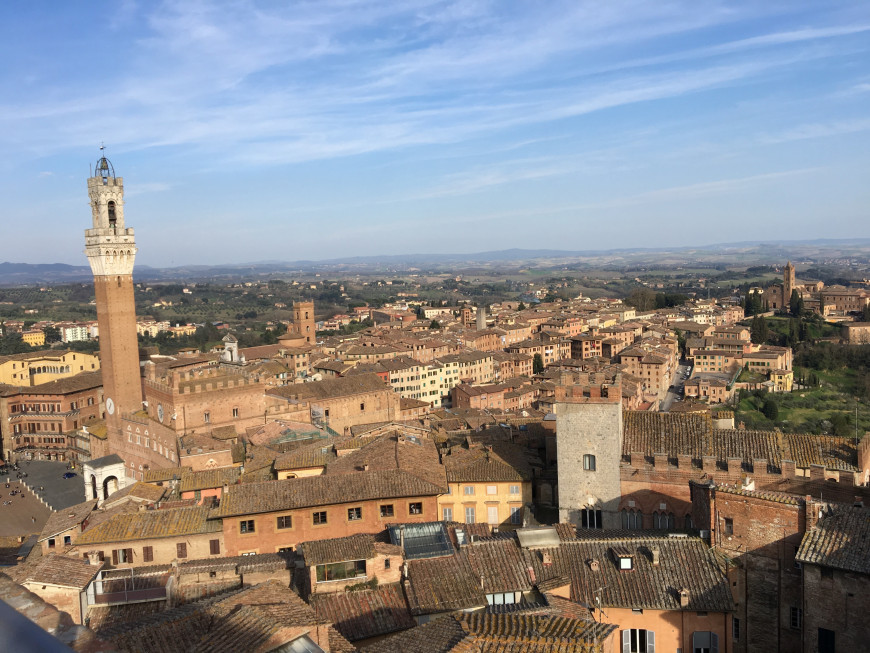
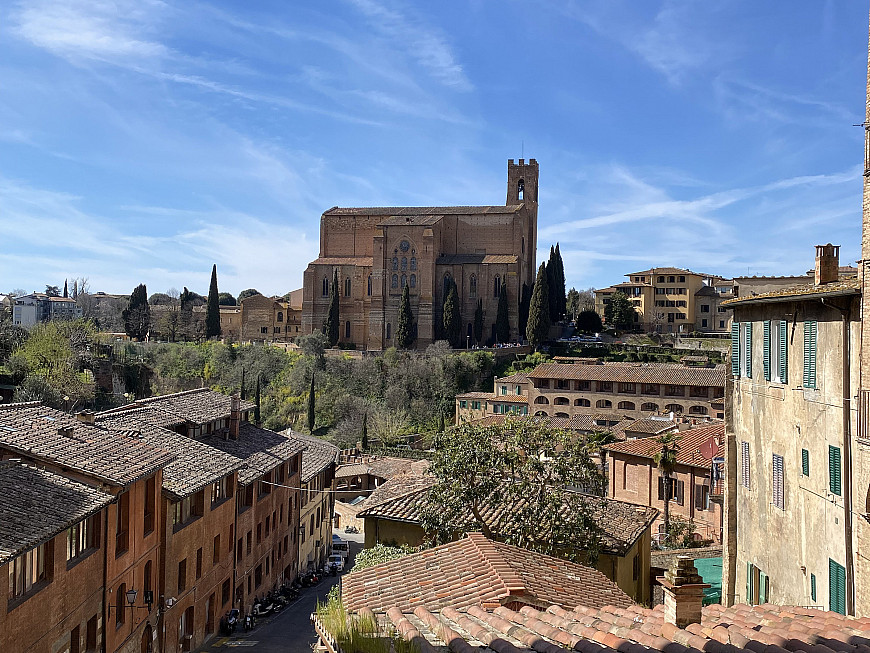
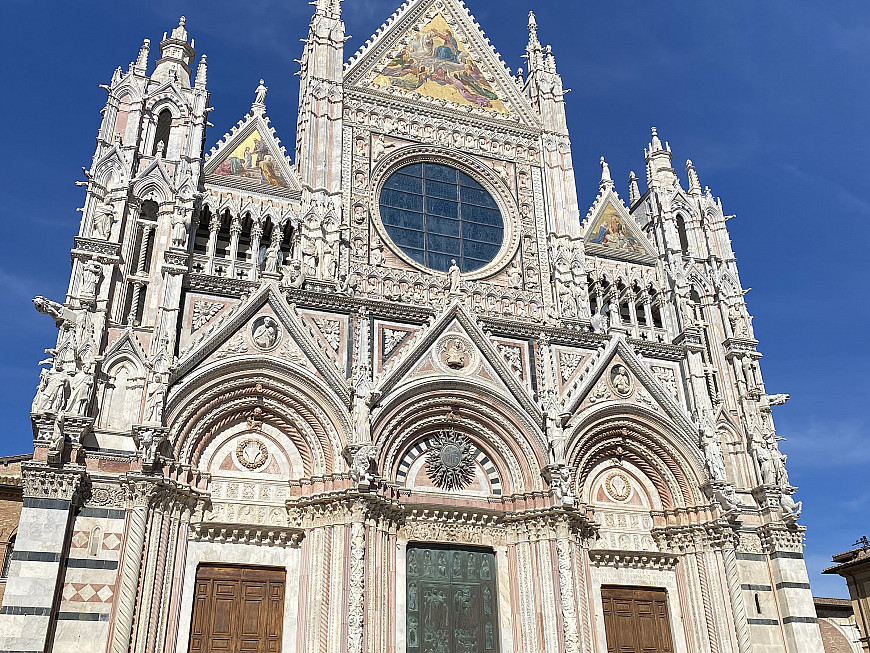
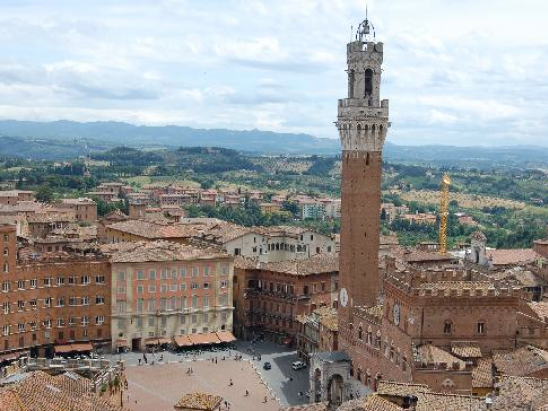
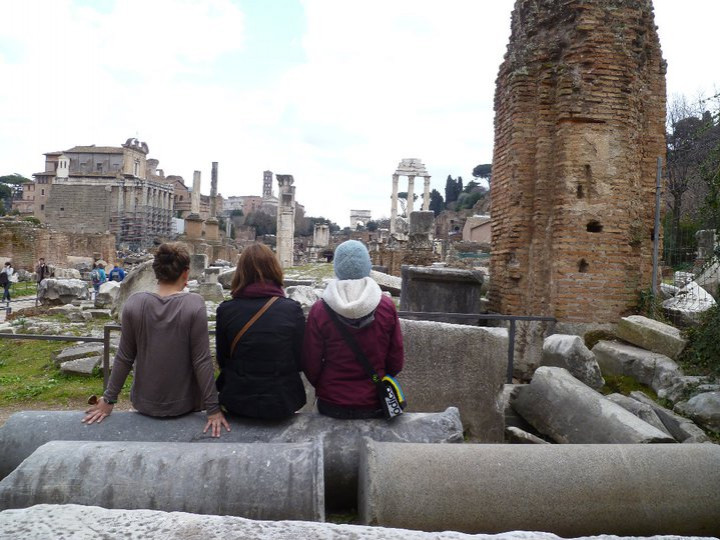

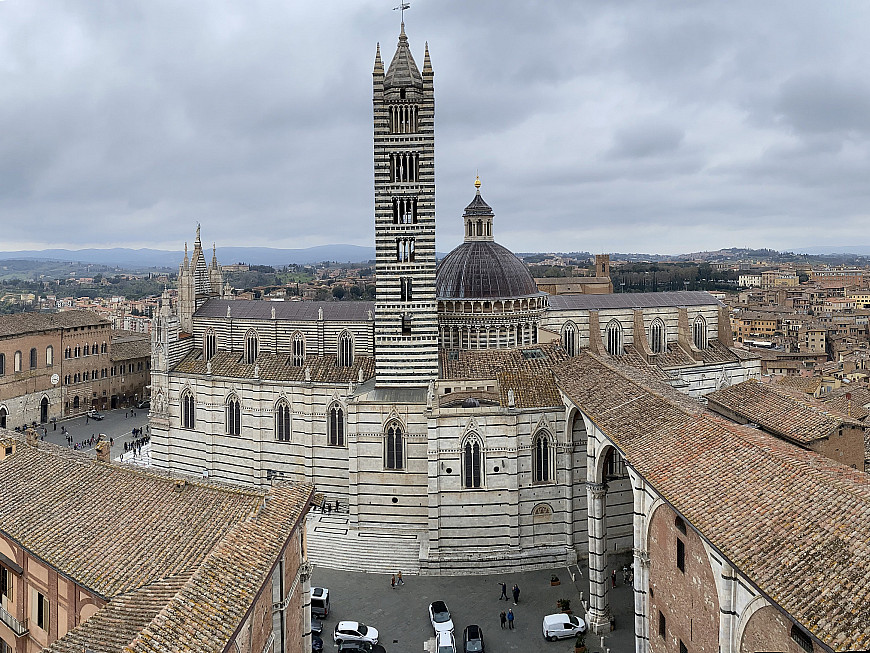
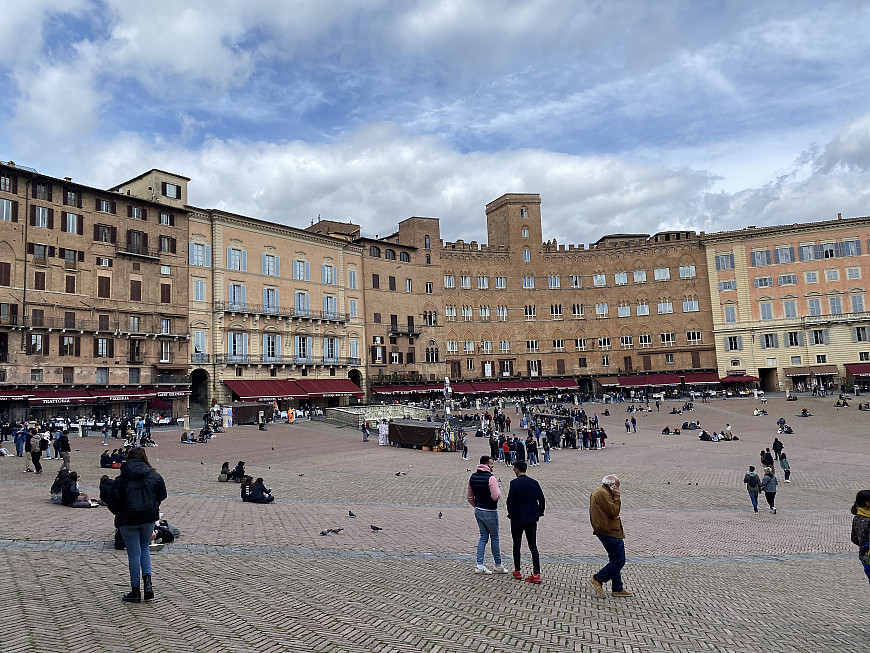
| Program Snapshot | |
| Semester: | Spring |
| Offered: | Spring 2025, Spring 2027, Spring 2029 |
| Estimated Dates: | Mid-January to mid-May |
| Program Focus: | Regional Area Study with Language Component |
| Prerequisites: | WLL 101: Beginning Italian (offered semester prior to participation). Students are required to successfully complete the course, earning a C grade or above.* Overall GPA of at least 2.75 and good academic standing required. Students must satisfy the Words and Numbers CORE requirement before participating in an overseas program. |
| LC (Preprogram) Recommended Courses: |
ART 301: Italian Renaissance Art ART 310: Baroque Art and Architecture ENG 280: The Medieval World HIST 227: Medieval Europe HIST 323: Modern European Intellectual History |
| Housing: | Host Families |
| Spring 2025 Program Leader: |
Benjamin David Associate Professor of Art History bendavid@lclark.edu, 503-768-7393 |
| Spring 2027 Program Leader: | Stephen Tufte, Associate Professor of Physics, tufte@lclark.edu, 503-768-7588 |
Program Design
In cooperation with CET Academic Programs, Lewis & Clark offers a program of regional area study in Italy. Using Siena as a base, students will explore Italy through the study of its language, history, literature, and art. Over the course of the semester, the group participates in a number of cultural activities and excursions to regional areas of interest, particularly Tuscan hills towns, Bologna and Rome.
The program begins with a three-day orientation, designed to help students get to know the city of Siena, their peers, and the CET program staff. The orientation will also cover health and safety and logistical information, and help students develop a basic understanding of Italian culture. Students will start exploring the various intriguing, though sometimes contradictory, characteristics of Italian society today.
After the conclusion of orientation, the academic program begins. During the semester, students take Italian Language, art history and a choice of two elective courses from a pre-approved list of four.
Onsite Staff: The Resident Director of CET Siena is Victoria Van Luit. Victoria grew up in California and studied at the University of California San Diego. In 1998, she participated in a UCSD study abroad program in Siena, an experience that changed her life. Victoria has been in Siena ever since, marrying her Italian husband and raising their two daughters, and working in study abroad. She has worked at the UC Siena Study Abroad Center and Dante Alighieri Siena. She joined CET in 2016. Victoria has a keen understanding of student cultural adjustment and other issues related to living abroad.
About the 2025 Program Leader - Benjamin David specializes in Italian art from 1300-1600, with an emphasis on Early Renaissance painting. His scholarship and teaching engage the historical and theoretical implications of the practice of narrative in Renaissance art and theories of narrative more generally. He is especially interested in the relationship between art and literature. Other research projects and courses explore the complex nature of the Renaissance engagement with classical antiquity and visualizations of Dante’s Divine Comedy from the fourteenth century to the present day. He is also interested in how contemporary art creates dialogues with Renaissance and Medieval Art and in the intersections of art history and theories of memory.
About the 2027 Program Leader: Stephen Tufte started teaching at Lewis & Clark in the Fall of 1999. He hailed from the University of Wisconsin - Madison where he obtained his PhD in Physics and then did a post-doc in the Astronomy Department. He has taught a wide variety of courses at Lewis & Clark in the Physics Department and continues research work in the study of interstellar matter and binary stars.
Academics
Requirements Fulfilled:
General Education - This program fulfills the Global Perspectives general education requirement for students who successfully complete 8 or more semester credits. IS 201 (Topics in Renaissance Art History: Sienese Art & Architecture) fulfills the Historical Perspectives or the Creative Arts general education requirement. IS 204 (Contemporary Italian Cinema: From Canon to the Fringe) and IS 205 (Roman Art and Archaeology) fulfill the Creative Arts general education requirement.
WLL 201 fulfills the World Language proficiency general education requirement.
Credits: 16 credits. Students take 7 credits of Italian language, a 3-credit Sienese Art & Architecture class, and two 3-credit electives chosen from the list below.
Curriculum:
Required courses:
- WLL 102: Beginning Italian II (4 credits)
- WLL 201: Intermediate Italian I (3 credits)
- IS 201: Topics in Renaissance Art History: Sienese Art & Architecture (3 credits)
Electives: The fourth and fifth courses are electives chosen from two of the following three credit classes:
-
- IS 202: Italian & European Politics
- IS 203: Italian Cultural History
- IS 204: Contemporary Italian Cinema: From Canon to the Fringe
- IS 205: Roman Art and Archaeology
*Students who have placed into a level of Italian Language beyond the 201 level** may, in consultation with the Overseas Office and Program Leader, elect to take higher level Italian language classes in place of WLL-102 and WLL-201. Alternately, students may elect to replace one or both courses with the approved electives listed above.
*Students who have placed into the 201 level of Italian** may replace WLL-102 with one of the additional elective courses listed above, or an additional Italian language course at the 202 level.
Course Descriptions:
Required:
IS 201 Topics in Renaissance Art History: Sienese Art & Architecture (3 credits)
This course explores the development of art in Siena from the beginning to the end of the Republic (mid-13th century to mid-16th century), focusing on its cultural and historical context. Particular attention is devoted to the golden age of the Sienese Gothic Era. In-class lectures and slide presentations are combined with field trips to Siena, Pienza and San Gimignano, and on-site lectures in churches and museums, so that students have the opportunity to see the art they are studying in its proper context.
Choice of two:
IS 202: Italian and European Politics (3 credits)
This course explores the dynamics of Italian and European politics since the end of the Second World War. The preliminary aim of the course is to offer a historical survey. After briefly presenting the main lines in Italian and European politics from the end of the 19th century to the Second World War, the course turns to investigate the development of Italian politics (from the first Republic to the current government) and the European integration (since the foundation of the European communities in 1957, to the last wave of enlargement in 2007). The main focus of the course is to look at specific political institutions (such as the party system, the Parliament, the Executive, the Courts, etc.) at both Italian and European levels. Political culture and the territorial distribution of power are also investigated.
IS 203: Italian Cultural History (3 credits)
This course introduces students to Italian society by examining the principal aspects of the country’s contemporary culture from an historical perspective. Our primary goal is to consider how developments over the past century (and from a few early periods) have influenced the lives of, and formed the outlook of, today’s Italians. In other words, we are engaged in the historical search for something quite elusive: Italian “identity.” Two key concepts guide this search: nationalism and civic participation. The course explores how the past has influenced the lives and formed the outlook of contemporary Italians. It will explore and interrogate Italian cultural identities giving particular attention to issues such as the relationship between national and regional belonging, civic participation and its representations, migration, gender relations, and the interaction between local, national and supranational dimensions in Italian culture and history. Questions about the role of the family, religion and demographic trends reveal the important developments of the Italian home. Civic participation and Italy’s political life under both dictatorship and democracy are explored. The examination includes the effects of WWII and, later, global terrorism. The most famous representations of contemporary Italy—the items most associated with “made in Italy”—are also considered. The course concludes with a contrast of Italian and European attitudes as seen through the development of many European Union initiatives.
IS 204 Contemporary Italian Cinema: From Canon to the Fringe (3 credits)
This course examines the social, political and economic evolution of contemporary Italy through cinema and other forms of visual culture. Film is one of the 20th -century art forms most suitable as a medium for observing and developing an understanding of the way that contemporary Italy has evolved since World War II, with cinema as the historical record of this evolution. As such, the cinema is also examined from an aesthetic point of view, the iconographic and stylistic developments of the medium also being crucial elements of a visual culture that complements and references traditional modes of representation such as painting and sculpture, as well as architecture, literature and the oral folk tradition.
IS 205: Roman Art and Archaeology (3 credits)
This course serves as an introduction to the art and architecture of the ancient Italic civilizations by exploring in depth the historical, political and cultural evolution of Italy between the 8th century BC and the 5th century AD. The course begins with a close study of the highly refined culture of the Etruscans, who dominated Central Italy until the Roman Age. Then, emphasis is placed on gaining understanding of the Roman civilization within its broad cultural and historical contexts, focusing on sculpture, architecture, engineering, painting and urban design. The course is not confined to a study of works of art but includes the historical, social, cultural, political and patronage issues that affected the style, form and content of one of the Italy’s most important civilizations of the Antiquity. To that end, throughout the course, an attempt is made to present art in relation to the history and culture from which it emerged, and of which it is an expression and reflection. The course ends with the investigation of new artistic modes emerging in Italy at the end of the Roman Empire. Lectures in class are complemented by on-site visits to see many artworks and monuments in Siena and Florence. As the Antiquity works are often still in their original physical settings, students have the unique opportunity to experience the works as their original viewers did and as their creators intended.
Activities and Excursions: Activities in the Siena area often include:
- Picnic on the Via Francigena
- Visit artisan workshops in Siena
- Sienese terracotta tile painting
- Visit the Duomo, Duomo Museum, and climb the Facciatone
- Opera night
- Day trip to San Gimignano
The program also features overnight excursions to Rome and Bologna.
* Students may be exempted from the pre-semester Italian 101 course at the discretion of the instructor, or by submitting an official placement exam result indicating placement into a higher level of Italian. The instructor may not exempt the student from WLL-102 or 201. Students are required to enroll in WLL-102 and 201 unless an official, qualifying placement exam** has been submitted to the Registrar’s Office.
** Placement exams must be administered by a regionally accredited institution of higher learning (US or Canada). See the Registrar’s Office for more information on the placement exam requirements.
Student Life
Housing:
All participants are accommodated with local host families. The homestay is an integral part of the Siena program, offering students the opportunity to make lifelong friends, reinforce the language skills acquired during daily lessons and to experience modern Italian culture from “the inside.” The carefully selected families are all experienced in hosting American students. The host families view this experience as a form of cultural exchange and are eager to share their version of Italian culture with program participants.
Suggested Readings:
- Tim Parks, Italian Neighbors
- Tim Parks, An Italian Education, Avon Books, 1995
- R.W.B. Lewis, The City of Florence, Henry Holt & Co., 1995
- John Hale, The Civilization of Europe in the Renaissance, Atheneum, 1994
Cost
2024-2025 Fee Breakdown*
Total Fee (includes Tuition, Program Fee, and Health & Wellness Fee): $40,962
Tuition: $32,197
Program Fee: $8,728
Health & Wellness Fee: $37**
Included in the program fee are room/housing, board/meals, and administrative fees. Not included are airfare, passport and visa expenses, primary insurance coverage, photographs, books, immunizations, and incidentals.
*Fees are updated every February for the following academic year.
**The Health & Wellness Fee supports the operations of Wellness Services staff in delivering pre-program orientation services, as well as in providing health-related consultation regarding participant health needs. All students in the College of Arts and Sciences pay a mandatory fee of $37 per semester.
Stipend: Students will receive a stipend to cover the cost of meals and transportation costs not covered by the program fee.
Estimated Airfare (Round Trip PDX to FLR): $1,000 - $1,500
Estimated Travel Document Fees: $60 - $80
Estimated Health Insurance Fee: $1,906
All students participating in overseas programs are automatically enrolled in iNext, a supplemental travel insurance program. The fee for iNext is covered in the program cost. However, students are also required to have comprehensive health insurance during their time abroad. All students participating in overseas programs, both abroad and domestic, are automatically enrolled in the College’s student health insurance program. Similar to a regular semester on-campus, students participating in overseas programs may waive enrollment in the student health insurance program if they have other comprehensive health insurance (e.g., through a parent, guardian or employer) that 1) provides coverage for them in the geographic region in which they will be studying and 2) includes mental health benefits. Click here for more information regarding health insurance & overseas programs.
Program Preparation
Application Process: This program has a dual application process. Student must first submit a Lewis & Clark Application one year before the start of the program. Once admitted by Lewis & Clark, the students will receive instructions for submitting their secondary application to SIS and will receive a separate notification letter of admission. Please keep a digital copy of your essays and other application materials as you will need to submit these similar materials to SIS. Please note that this secondary application process can be as late as the semester preceding your scheduled participation.
The semester before the program, students who have been accepted will meet regularly for orientation. This orientation is meant to prepare the students for life in Siena by exploring literature and culture, and provides an opportunity for students to learn more about the logistical details of the program.
For more information about the application process, click here.
Travel: Students usually fly into the Pisa airport (PSA), where they are met by SIS staff and will travel to Siena as a group.
Visa: Students will be required to apply for a visa in order to participate in this program. Students are required to visit a consulate in their jurisdiction to make a personal appearance to apply for this visa. The nearest official consulate that serves the Portland, Oregon area is San Francisco. In the past students have been able to apply with the Honorary Consul in Portland. However, this is not a guarantee. More information will be provided upon admission to the program.
Country-Specific Health Information: Click here to view specific health information for people traveling to Italy.
State Department Country Information: Click here to visit the State Department’s Italy page.
Italy, Siena
Blog Posts
Tasting, Breathing, and Living Siena.
Overseas and Off-Campus Programs is located in room 206 of Albany Quadrangle on the Undergraduate Campus.
MSC: 11
email overseas@lclark.edu
voice 503-768-7295
fax 503-768-7300
Director Blythe Knott
Overseas and Off-Campus Programs
Lewis & Clark
615 S. Palatine Hill Road
Portland OR 97219